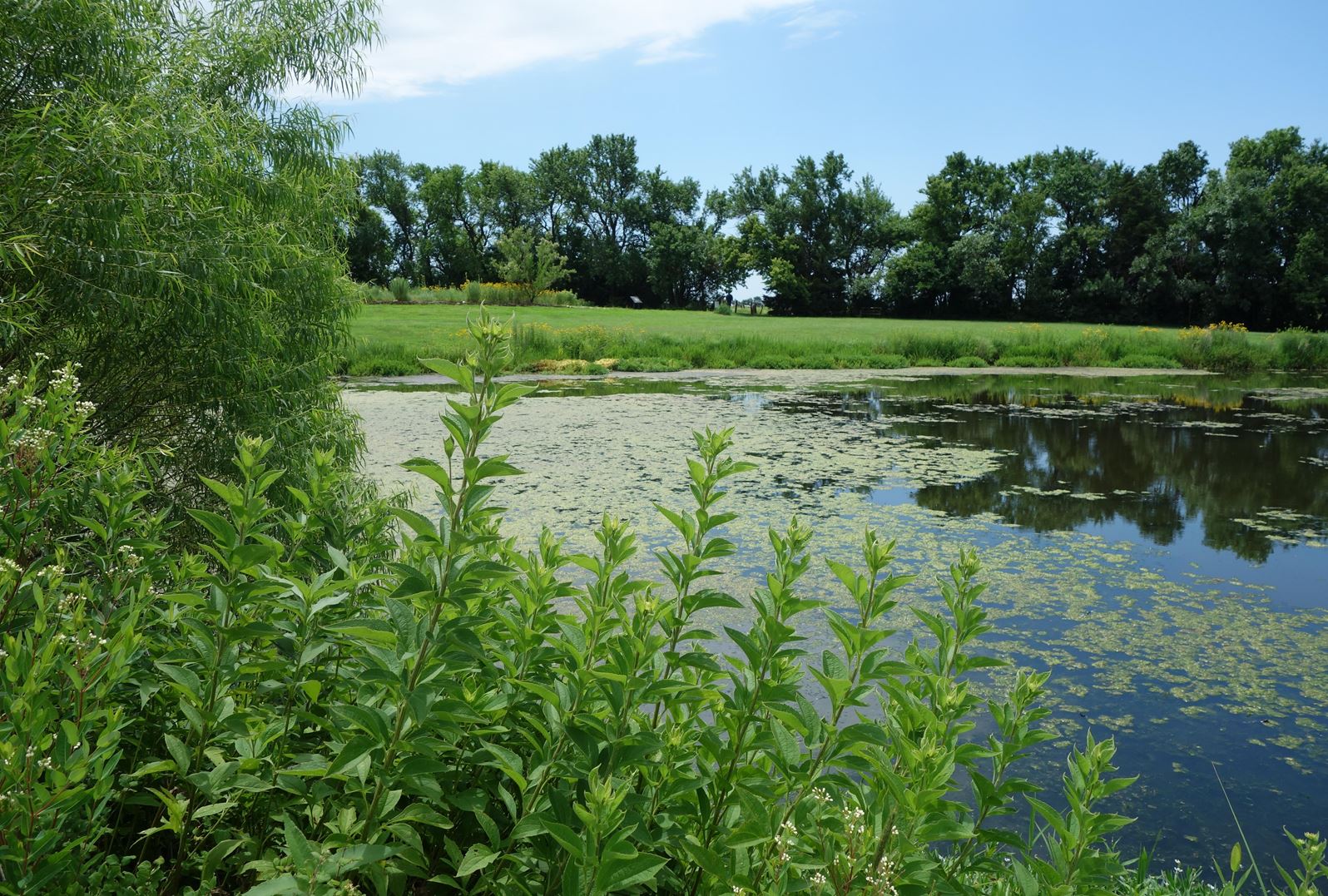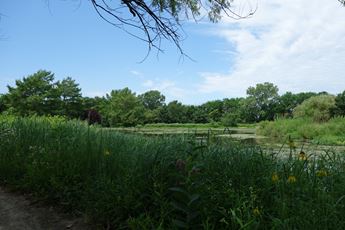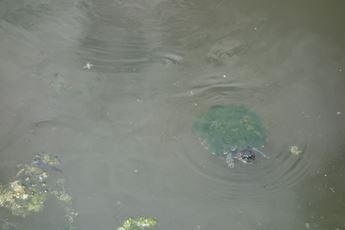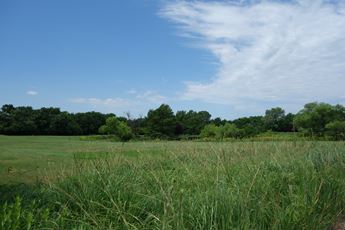

Horse Fossils and Buffalo Grass: Life on the Equus Beds Aquifer
For a librarian, Libby Albers sure loves aquifers. Before becoming the director of Hesston Public Library in south central Kansas, Albers worked in water and environmental resources management. She still maintains a passion for water in her current work. When asked how water affects her job at the library, she laughs and points at the fish tank in the lobby. But then she pulls a fossilized horse tooth off a shelf—she found it beachcombing in the surface waters downstream from the Equus Beds aquifer, so named because of horse fossils like the one she delicately holds.
Water does affect Albers’ work at the library, just as it affects everyone in Hesston (and, by extension, Kansas). Sometimes, it’s in small reminders—Hesston Public Library is one of three in the state where patrons can check out a fishing pole. Sometimes, water’s impact on library work is accidental, like when the water main out front had to be replaced, a symptom of the aging water infrastructure of both small towns and large cities across the country. Hesston’s water usage is primarily municipal, and it draws almost all its water from the Equus Beds aquifer. About 24 percent of the aquifer is used for residential purposes, while 13 percent goes to industry and 50 percent goes to irrigation. The Equus Beds begin just north of Wichita and stretch north and west to include Hutchinson and McPherson. It serves the most residential customers of Kansas’s aquifers.
Kansas aquifers in general are depleted faster than they're recharged, and some estimates have auifers in the state reaching a crisis point by the 2060s.
The challenge, according to Albers, lies in how to make aquifer preservation and care seem like a pressing issue for a Hesston, Wichita, or Hutchinson resident who can twist a knob and make clean water come out any time of day or night, drought or flood. However, Kansas aquifers in general are depleted faster than they’re recharged, and some estimates have aquifers in the state reaching a crisis point by the 2060s.
Brad Guhr, education coordinator at the Dyck Arboretum of the Plains, recites a quote most often attributed to Mark Twain: “Whiskey is for drinking and water is for fighting over.” It’s funny, but the context is clear: If we don’t care for the aquifers, things could get ugly, political, or even violent. Guhr says so far we’ve been lucky. He explains, “Kansans for decades have utilized a seemingly endless supply of water to drink, to bathe, wash clothes, manage sewage, generate power, irrigate lawns, and grow crops. We give it little thought, we turn on the tap and it is there – clean, plentiful and inexpensive. A good first step to better aquifer stewardship is more awareness.”






